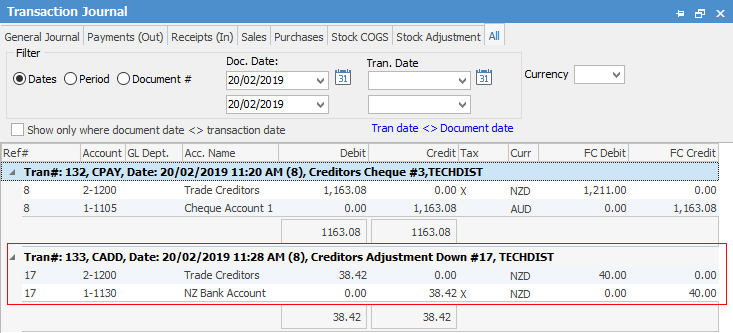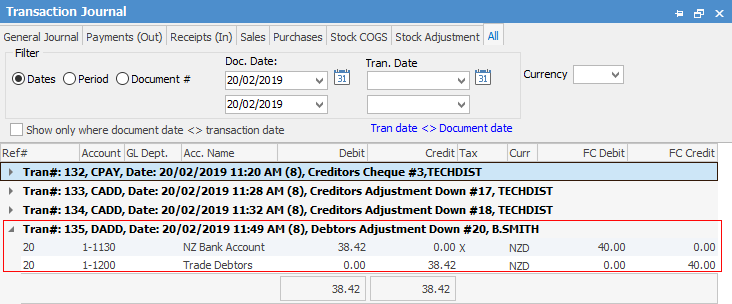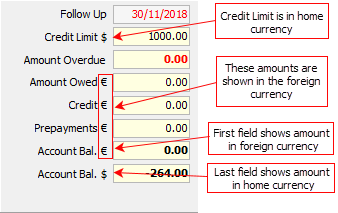
Debtors and creditors adjustments can also be used for foreign currency gains or losses.
This simple example assumes that a particular account is both a vendor and a customer, and that the amount owed to the vendor is reduced by NZD40.00 to contra AUD38.42 owed by the customer.
Using this same example, it is conceivable that the two accounts (the creditor and debtor) are different cardfiles, as in the case of an overseas supplier (vendor) having a local office trading under a different name (customer).
Transfer a balance from a creditor in currency X to a debtor/creditor in currency Y using Adjustments Up and Adjustments Down.

|
Some letters in the field names within the header are underlined, eg. Type. Using Alt+ the underlined letter will jump to the field beside that heading. |
The example above shows a Creditor Adjustment Down for NZD40.00.
The default exchange rate for NZD is at 1.0412.
This creates a NZD40.0 creditor credit, ready to apply.

Looking at the Transaction Journal created for this adjustment, Jim2 has calculated the equivalent value in home currency as AUD38.42 and moved to the adjustment account in the general ledger.
|
Multicurrency transactions must move through the general ledger in home currency using the exchange rate selected on the document. They are recorded in both foreign currency and the equivalent value in home currency in respect to the document rate. |
To complete the contra payment, record the Debtor Adjustment Down.
This creates a AUD38.42 debtor credit, ready to apply.

|
If a customer's currency is different to the home currency, the amounts in these fields will be shown in their currency, eg. if an Australian business with a European customer, these fields will be shown in €. If the debtor's currency is the same currency, only a $ symbol is shown, without a country symbol. |

Further information


